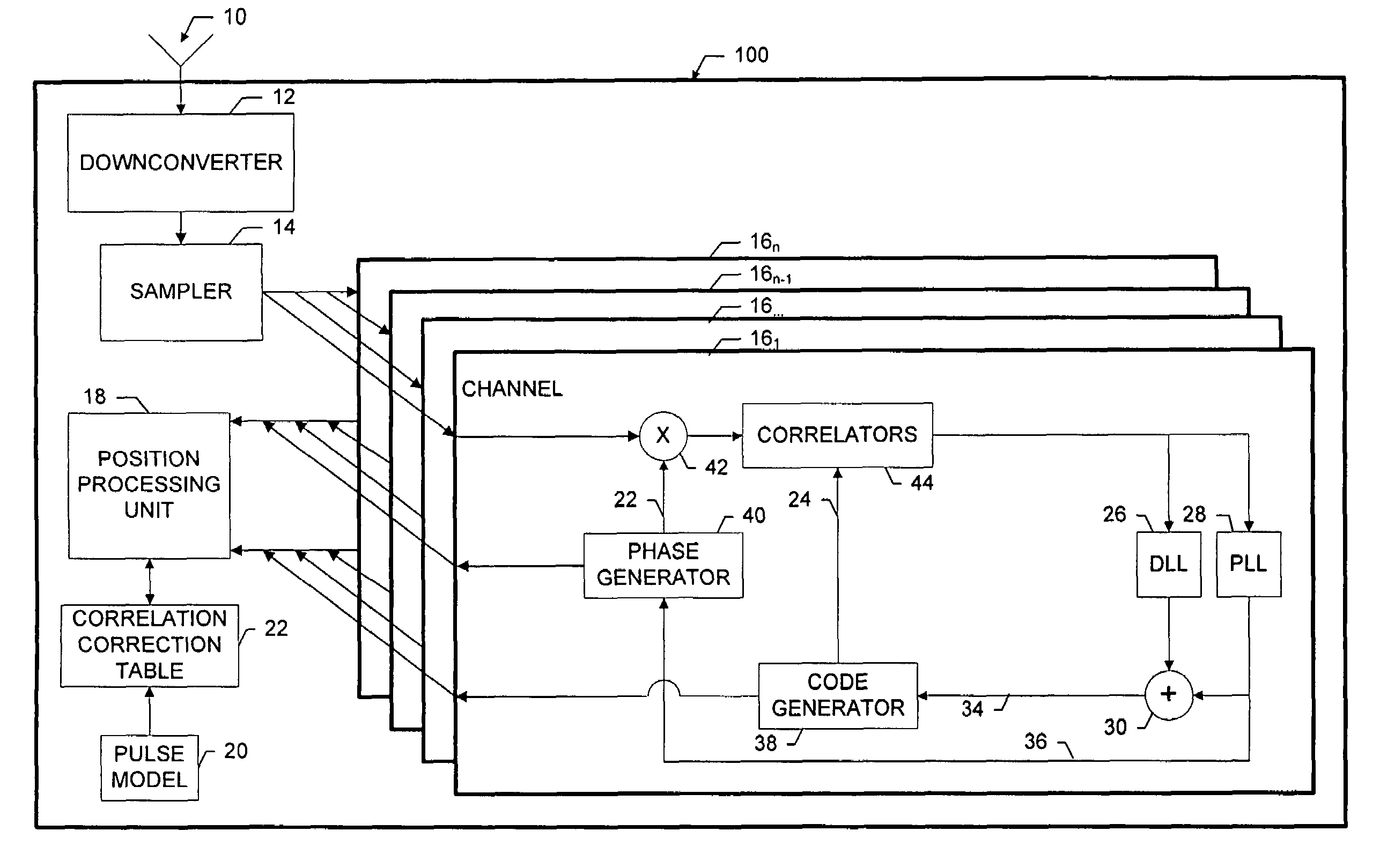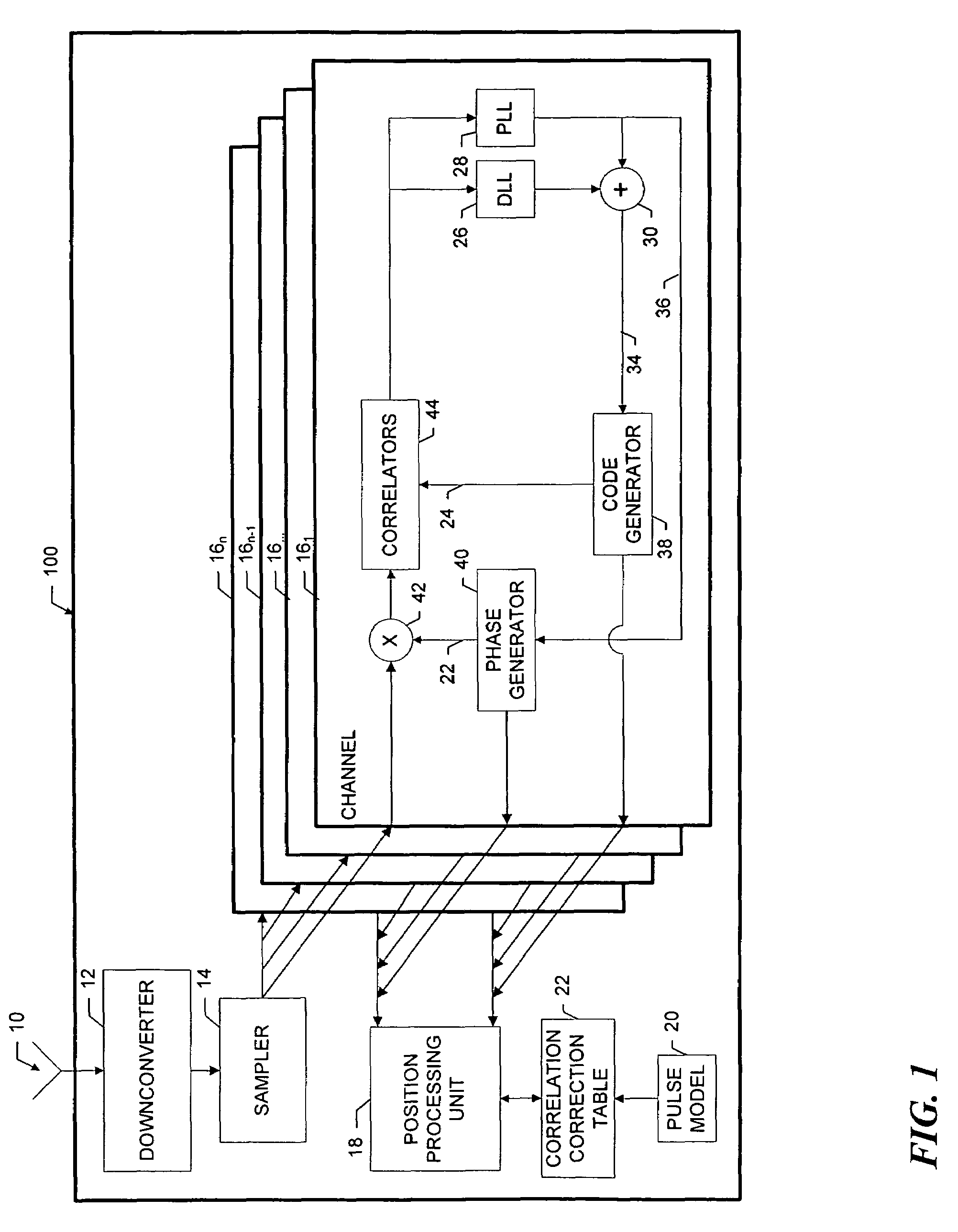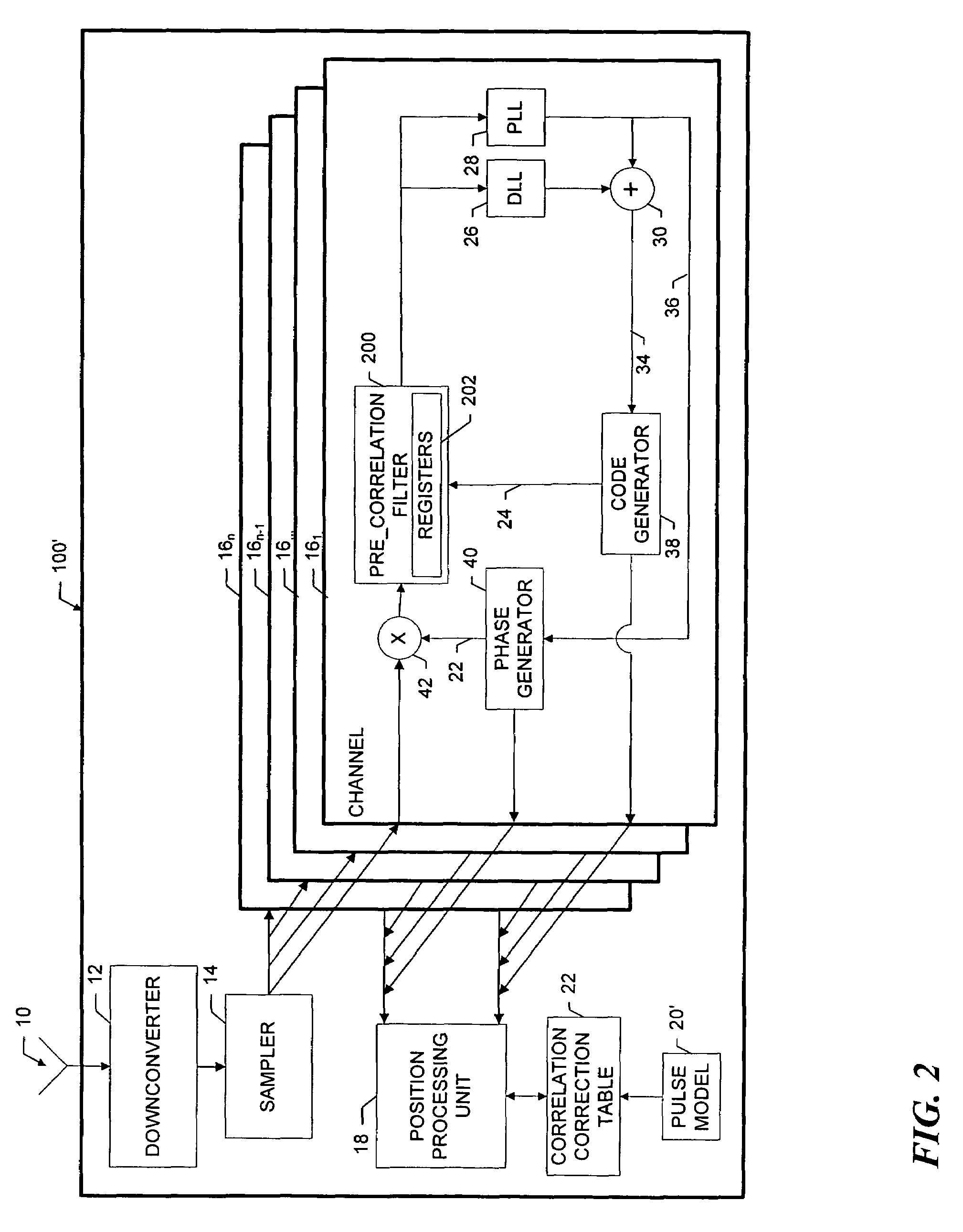Apparatus for and method of improving position and time estimation of radio location devices using calibrated pulse shapes
a radio location device and pulse shape technology, applied in the field of spreadspectrum systems, can solve the problems of affecting the synchronization process of the receiver with the direct-path signal, distortion may induce errors in the synchronization process of the receiver, and the received signal is corrupted, so as to avoid calibration operations, improve the estimation of positions and time, and detect satellite malfunctions readily.
- Summary
- Abstract
- Description
- Claims
- Application Information
AI Technical Summary
Benefits of technology
Problems solved by technology
Method used
Image
Examples
Embodiment Construction
[0035]As shown in FIG. 1 a receiver 100 that incorporates the invention includes an antenna 10 that receives spread spectrum signals that are transmitted by, for example, GPS satellites (not shown). A downconverter 12 translates the incoming satellite signals to an intermediate frequency. A sampler 14 samples the downconverted signal, and provides the samples to a plurality of data correlation channels 161 . . . 16n. For convenience, only one channel 161 is shown in expanded detail.
[0036]A given correlation channel 16 acquires and tracks the satellite signal in a well-known manner using correlators 44, a carrier phase tracking loop 36 and a code tracking loop 34. At predetermined times, the various channels provide ranging data to a position processing unit 18, which determines global position and time in a known manner. The position processing unit 18 also provides overall control of the correlation channels, such as assigning the signals from particular satellites to the channels ...
PUM
 Login to View More
Login to View More Abstract
Description
Claims
Application Information
 Login to View More
Login to View More - R&D
- Intellectual Property
- Life Sciences
- Materials
- Tech Scout
- Unparalleled Data Quality
- Higher Quality Content
- 60% Fewer Hallucinations
Browse by: Latest US Patents, China's latest patents, Technical Efficacy Thesaurus, Application Domain, Technology Topic, Popular Technical Reports.
© 2025 PatSnap. All rights reserved.Legal|Privacy policy|Modern Slavery Act Transparency Statement|Sitemap|About US| Contact US: help@patsnap.com



